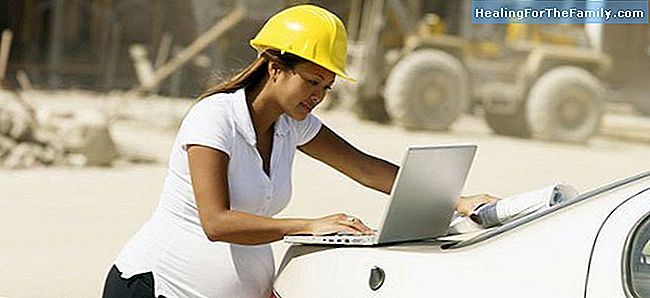The occupational risks of the pregnant woman
Pregnancy is an exceptional circumstance that requires more care in terms of protecting the mother and her future baby. It is necessary to know the main risk factors in the workplace for the pregnant woman and how to prevent certain situations that can be dangerous for both her and the baby in her w
Pregnancy is an exceptional circumstance that requires more care in terms of protecting the mother and her future baby. It is necessary to know the main risk factors in the workplace for the pregnant woman and how to prevent certain situations that can be dangerous for both her and the baby in her womb.
The most common risks at work

Depending on the job position of the pregnant woman, she may suffer more or less risks. Risks can be physical, biological, chemical, environmental, etc. What can represent a risk to your health?
1.Physical risks. The shocks, certain movements and postures, vibrations and noises, ionizing and non-ionizing radiations, extreme temperatures, mental and physical fatigue, are some situations that can affect the pregnant woman in her workplace, especially if she is a nurse, dentist or worker of the industrial or construction sector.
2.Biological risks. Pregnant women who work in the health and veterinary sector may be exposed to the risks of infection with hepatitis B virus, cytomegalovirus, rubella, toxoplasmosis, herpes and syphilis.
3. Chemical risks. Pregnant women who have agricultural occupations, who are sanitary and artisan professionals, who are in contact with substances such as acids, gases, pesticides, solvents, varnishes and paints, metals and other toxic elements, suffer a high risk to their health.
4. Environmental risks. Environmental risks especially affect women working in environments with modified atmospheres, such as flight hostesses, especially if they work night and day. The most advisable thing is that they have only one work shift.
5. Psychosocial risks. Women who work in an environment of high work stress and for many long hours, or even occupy a solitary job, may suffer from psychosocial risks. Stress, anxiety and depression can put your pregnancy at risk.
6. Ergonomic risks. Working always standing or always sitting or in constant and forced postures can present a risk for pregnancy.
Occupational risks and their consequences for the pregnant woman
- Risk of early and late abortion
- Risk of premature delivery
- Risk of low weight of the newborn
- Risk of multiple fetal malformations
- Risk of alteration in the state of maternal health.
- Risk of fetal death
Cases of sick leave for the pregnant woman
Any pregnant woman who suspects that her work situation is detrimental to her health or that of the fetus should consult her doctor, who will determine if she needs temporary sick leave or transitory incapacity for work during pregnancy.
1. The family doctor will make this decision if the cause is medical, such as low back pain or sciatica, common discomfort during pregnancy.
2. The gynecologist will determine a sick leave if you observe an obstetric cause, such as bleeding during pregnancy or risk of premature delivery. El 3. The occupational doctor of the company's occupational health unit, although not usually the leading physician in the pregnancy, will determine women working in risk professions, such as the chemical industry or exposures to harmful agents, if they need a sick leave or change their department while the pregnancy is prolonged.
Source consulted:
- Basque Institute of Occupational Health and Safety












